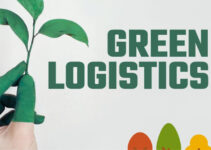Retail businesses and organizations employ various strategies to have control over SCM processes like timing, expenses, product quality, inventory, and warehousing. Effective SCM strategy helps you to differentiate service offerings and delivery services to optimize cost balance and customer service. Today, we’ll discuss the type of retail supply chain management; its definition, and its benefits.
What is Retail Supply Chain?
Retail SCM is the process of managing the flow of finances, information, material, and goods from supplier to production facility, wholesaler, retailer, and end consumer. It comprises collaborating, integration, and synchronizing the flow of material both from within and outside the organization.
Retail SCM (supply chain management) is the method of integrating relevant information and the flow of physical goods from the production and manufacturing facility to the supplier and end consumer. It happens as a result of synchronizing various processes among various elements in the supply chain in case of fluctuating demands.
Efficient retail SCM processes help you to decrease time and cost in the purchasing process, improve productivity at the organizational level, and decrease inventory levels. Retail SC methods and practices are significant for the growth of businesses and trade across the world.
- Managing the flow of goods and products in the SC process
- Increasing the customer satisfaction level
- Decreasing cost
- Collaborating with SC partners
- Order generation, order taking, and order fulfillment
Types of Retail Supply Chain Management
Some of the main types of retail supply chain management are as follows;
Direct Retail SCM
As the name implies, direct retail SCM is when the manufacturer and producer directly sell its goods and products to the end consumer. Rarely, the producer involves very limited or no 3rd or middle parties to approach customers. The manufacturer and producer perform many of the marketing functions and transportation to facilitate the end consumers.
For instance, if a customer buys any type of cosmetic and beauty product from the manufacturer’s website; the producer directly sends the product to the end consumer after processing the payment and order. It would be a direct retail SCM method that involves producer-to-consumer.
Indirect Retail SCM
Indirect retail SCM is when any 3rd intermediary independent party becomes involved between the producer and the customer. The length and number of intermediary parties involved between manufacturer and customer are difficult to define.
For instance, if customers buy things from Avon’s online store, and the company’s salesperson mails the product to the end consumer from their inventory. It would be indirect retail SCM that involves manufacturer-to-retailer-to-consumer. Here, Avon’s salesperson is an independent retailer.
The lengths and number of intermediary channels involved in the indirect retail SCM are as follows;
- Geographic dispersion
- Frequency of purchase
- Size of purchase
- Needs of consumers
- Tech complexity of the product
- Nature of product like value, perishability, weight, and bulkiness
Push Supply Chain
The push SC strategy is reliant on customer demand forecasting. Producers and manufacturers push various types of goods and merchandise into the market. It would take a lot of time for the merchandise to adopt to the market. Customer demand forecasting plays a key role in the push strategy.
However, manufacturers and producers develop maximum capacity and volume of merchandise and goods based on long-term demand forecasting. The push strategy relies on speculation and forecasting, and it involves different types of costs and they’re as follows;
- Transportation cost
- Production cost
- Inventory cost
- Maintaining buffer capacity
Integrating Push SC Strategy
It is the incapability of managers to meet the consumer demand pattern based on the push strategy. For instance, a textile manufacturer produces bulk quantities of apparel and clothes with the hope and expectations that a similar fashion would prevail and they push their merchandise into the market. Suddenly, the market trend changes, and the fashion product becomes obsolete, and the customers prefer and choose the latest fashion.
Pull Supply Chain
Pull SC is when there is a great demand for a company’s products and goods in the market. The demand system would tell you the quantity of merchandise to manufacture and produce. When the customer demand is high and the company has limited product capacity, the company would lose the opportunity. The probability of lead time is very low in the pull system.
Integrating Pull Strategy
It is when you rely on production and distribution for effective customer demand. The SC has a reactive and responsive nature in the pull strategy. It has got limited products, low variability, and the lead time is very low in this process. However, the problem with the pull SC strategy is that it has got no product scaling and decreasing operational costs.
Conclusion: Types of Retail Supply Chain Management
After an in-depth study of the types of retail supply chain management; we have realized that demand and trends play a key role in the retail industry. If you are learning about the type of retail SCM, then you should keep in mind the abovementioned types and categories.
Ahsan is an accomplished researcher and has a deep insight in worldly life affairs. He goes Live 3 days a week on various social media platforms. Other than research writing, he’s a very interesting person.


